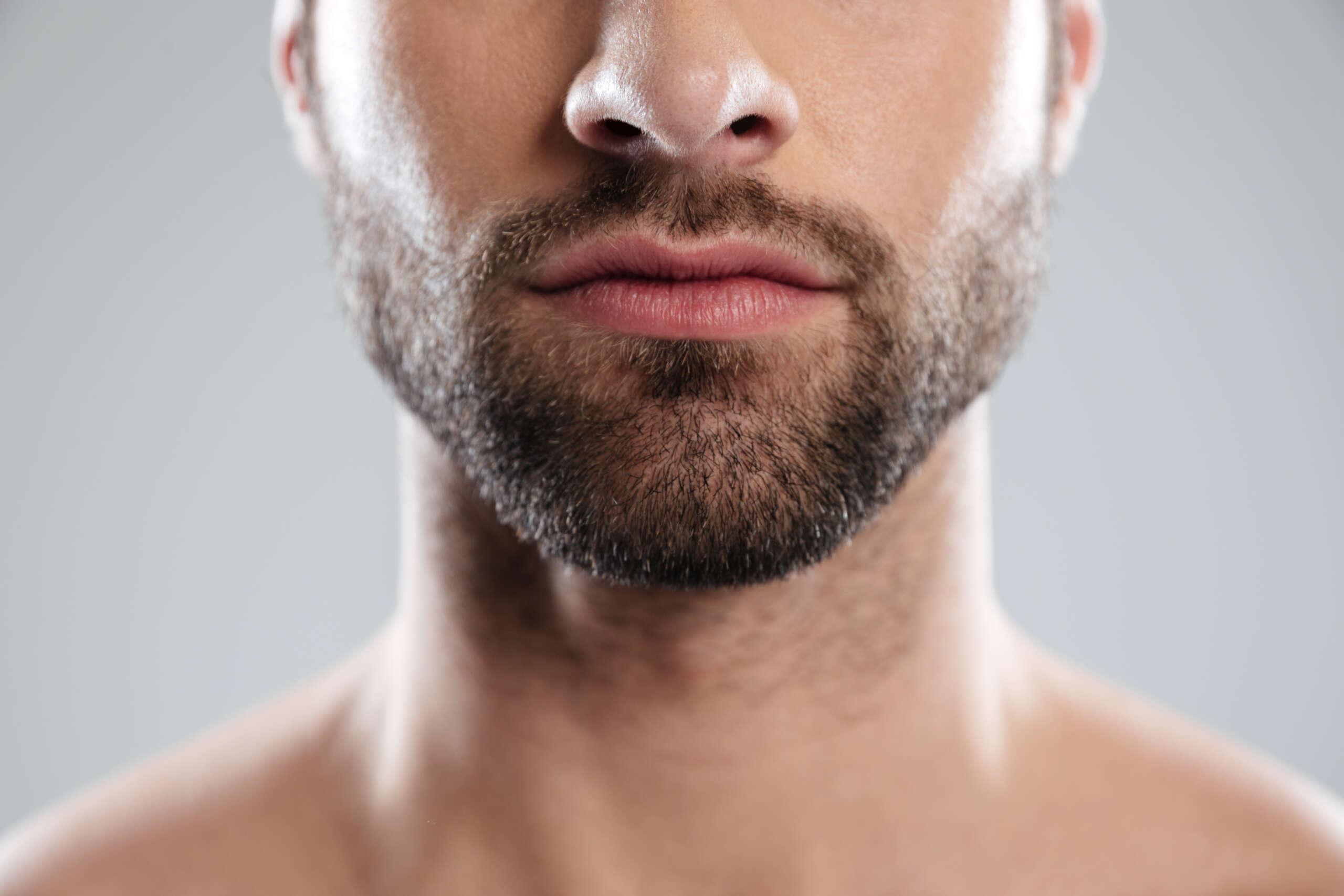Τhe beard begins to grow from the pre-adolescent age of about 12-14 years and it is fully developed until about the age of 25 years. That is why beard restoration is safer if done after this age, when its physical configuration is completed.
Beard is one of the secondary characteristics of the male sex and its development is due to the presence of the androgen hormone, testosterone. That is why it develops gradually during the sexual maturity of the man.
Beard is a special feature for every man and is considered a sign of maturity, masculinity and leadership personality. Nowadays beard styling is a man’s essential aesthetic point for a modern look.
Beard restoration is indicated in case of an unformed beard (in various degrees), in case of a sparse beard that needs thickening, in case of a desirable reshape of the beard according to the preferences of the person concerned, or in case of local alopecia.
Diagnosing the cause of the absence or the thinning of the beard is a necessary step before proceeding to hair transplantation. Pathologic conditions such as an autoimmune disease (which is usually alopecia areata), trichotillomania, scarring alopecia after bursitis (acne) or after injury etc, have to be properly investigated. If a specific cause of alopecia is diagnosed, other than the problematic formation of the natural hormone-dependent growth of the beard, then it must be decided whether or not hair transplant is a contraindication.
In case of an unformed – uncompleted beard without a pathological background, assessment of the rest male body hair and or realization of hormonal blood tests are certain preoperative diagnostic steps.
In the undeveloped beard, the hairless areas are usually located on the cheeks (lower half of them) as well as below the mandible’s limit. Sometimes these areas can be located on the chin and rarely on the mustache.
Beard restoration is done by transplanting hair follicle grafts from the back of the scalp (occipital region) to the area of interest. The placement of these grafts is done by using the implanter without making any prior skin reception holes.
The hair follicle grafts that are transplanted can be both single-follicle and multi-follicle ones. Their proper distribution is important to get a homogeneous hair thickening and a satisfying hair growth appearance.
Beard restoration/formation in terms of its upper limit (height and shape of it), its connection with the mustache (at the level of the mouth corner or below it) and in terms of perioral arrangement (full hair coverage of the entire chin or shaping hairless gaps below the mouth lower lip), are strictly personal aspects of the person concerned. Another personal choice is the hair density of the beard.
All the border lines of the beard (up to the zygoma, sideways to the mandible’s corners and down to the neck) are formed with small and discreet zig zags in order to get a natural look.
Beard connection with the mustache, the chin and the sideburns require experience and follow medical rules, in order to make a smooth transition of hair growth from area to area.
Regarding the hair implantation below the mandibular limit, the lower it progresses, the more laborious it becomes. Overall smooth cooperation with the patient is necessary, given the uncomfortable placement of his head as well as the doctor’s uncomfortable positioning during the implantation.
The direction of the transplanted hair is generally downwards. However over the mandible’s corners, the patient may express a personal opinion about its modification outwards.
Special caution is required in order not to injure the external maxillary (facial) artery while dyskinesia of the local mimic muscles takes place due to the local anesthesia application.
Washing of the transplanted area starts on the third post-op day and there are specific eating and drinking postoperative instructions so as not to risk any local infection or injury that may result to a problematic or low final hair growth.
Compare to the scalp hair transplant, skin healing and the grafts’ epidermal remnants apoptosis are usually faster, the hairs from the transplanted hair follicles are usually preserved right from the beginning in a greater degree and the evolution of the new hair growth is rapider. Most probably all the above findings are due to the abundant facial blood circulation.
A special phenomenon is the reddish / purplish coloration of the skin which can usually persist for 3-5 weeks postoperatively without indicating inflammation or active bursitis. Probably this is due to the postoperative hyperemia of the already highly vascularized area. It usually subsides by the third postoperative month.
It should be emphasized that in case a very dense beard is desired, a second hair transplant operation may be required, especially if the beard is initially undeveloped in a high degree.
Finally, it is mentioned the possibility of enhancing beard hair growth (when the beard is properly developed) with the topical use of minoxidil as well as with the appropriate lifestyle in terms of diet and physical exercise.



